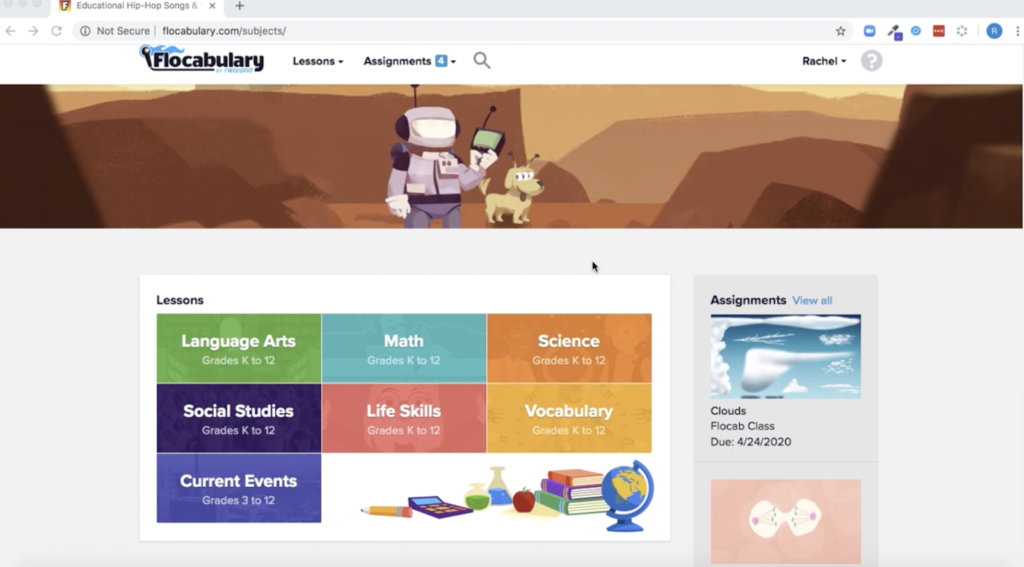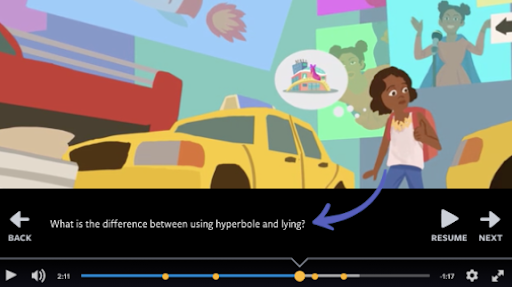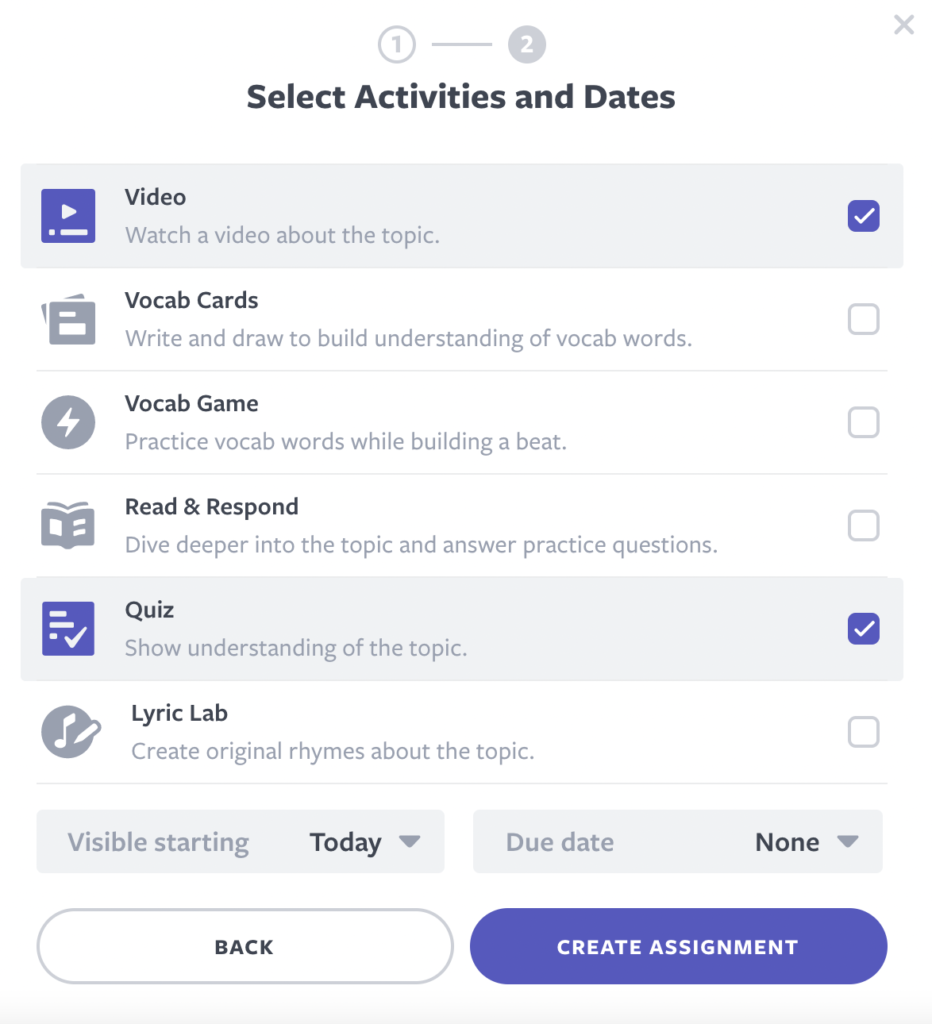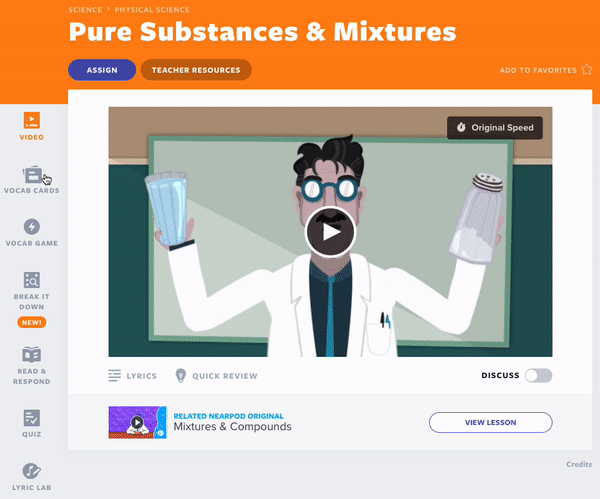
How to teach your students to use Flocabulary
Flocabulary is an amazing tool for building community during back to school season, allowing educators to present engaging hip-hop videos to teach academic vocabulary. But don’t hog Flocab for yourself! The new school year is the perfect opportunity to build student choice and voice by helping them learn how to use Flocabulary for student-centered learning. Whether it’s through class discussions in a whole group or having students log in and complete work independently, Flocabulary has hundreds of lessons to keep students engaged, help them connect with characters that represent a diverse student population, and hopefully, learn some academic vocabulary along the way!
How to teach your students to use Flocabulary
1. Set a few minutes aside for students to explore the website
This can be helpful when introducing any new tool to your students so they know how the platform works and have the opportunity to ask questions before you dig too deep into academic content. Make sure everyone knows how to log in and navigate the website. Use the student section on the Flocab Help Desk to help them get started, or share this quick video if you have a school or district license. Give students some time to explore the videos and activities on the platform. You can give them some guidelines, such as having them browse a specific category, or just give them free reign to search for any topic of their choice. As they explore, you might provide them with some guiding questions to keep them focused, such as:
- As you are exploring, what do you notice about the lyrics/characters in the videos?
- What topic(s) sparked your interest?
- What did you notice about the activities?
After providing them with some exploration time, bring the group back for a reflection and have them share what they noticed.

2. Model how to conduct productive conversations using Discuss Mode
One way to help students learn how to use Flocab independently is to follow the I do-We do-You do strategy. You might start with modeling how to conduct productive conversations using Discuss Mode on all Flocabulary videos. Discuss Mode is a great way to practice both speaking and listening skills and encourage students to use the lesson’s vocabulary words in a real-world conversation. Model what it looks like to respond to the questions thoughtfully, making sure to incorporate the vocabulary words into your responses. Provide students with question stems that encourage open-ended thoughts to spark additional discussion. Then practice as a class, providing guidance to move students towards having productive independent discussions. Once students are comfortable using Discuss Mode, you could use this as a center/station for students to practice on their own. Students love to talk, using Discuss Mode with Flocabulary videos gives you a way to encourage talking around academic content.

3. Assign the Quiz for students to complete independently

So what’s next? The videos are just scratching the surface of what students can do with Flocabulary. Beyond the videos, each lesson has activities to practice with the vocabulary words and help students move the words into their long term memory. An easy place to start is with the Quiz. Introduce a new topic with a Flocabulary video as a hook at the beginning of a lesson. Use Discuss Mode to facilitate conversation. Then assign the Quiz for students to complete independently.
4. Integrate Flocab into your classroom routines
Looking for more easy ways to integrate the activities into your classroom without having to carve time out of your schedule? How about using Flocabulary as a bell ringer activity or as part of centers/stations? You can assign different activities based on the day of the week. Here is an example:
- Monday: Assign the Video and have students watch independently. You might incorporate Discuss Mode into a whole group lesson later in your day or week to allow students to dig deeper into the content.
- Tuesday: Assign the Vocab Game. This is a fun way for students to practice with vocabulary words.
- Wednesday: Have students complete the Vocab Cards. You can assign all of the words or just a select few depending on how much time you have.
- Thursday: Take the Quiz! Working with younger students? Use the Microsoft Immersive Reader integration for those who need help with reading the questions and answers.
- Friday: Give students a chance to practice higher-order thinking skills with the Read & Respond activity or let them test their creative skills with Lyric Lab.

5. Encourage student choice and voice
Finally, choosing and assigning Flocabulary lessons aligned to your current lessons is a great way to bring engagement to your classroom. But did you know that students can do self-directed learning with Flocab? Consider bringing Flocabulary into parts of your classroom where students have a choice in what they are learning. Use centers/stations during independent work time? Do you incorporate choice boards into your classroom? Why not have Flocab be an option and let students choose which videos they are interested in watching. Encourage them to share what they learned by drawing a picture, writing a summary, or even completing the Lyric Lab.
Start using Flocabulary with your students
Whole group lessons with Flocabulary can be a great way to bring engagement into the classroom, but you can kick it up a notch by giving students a chance to explore their interests and complete activities independently. The more practice we give students with academic vocabulary, the more opportunities they have to build a deep understanding of the words. Back to school is the perfect time to explore Flocab with your students. Give them a chance to explore, ask questions, and create routines for how you will use Flocabulary in the classroom to set them up for success throughout the school year.
